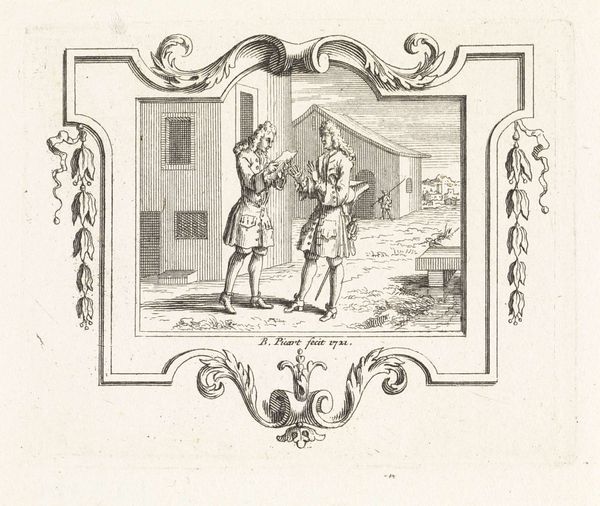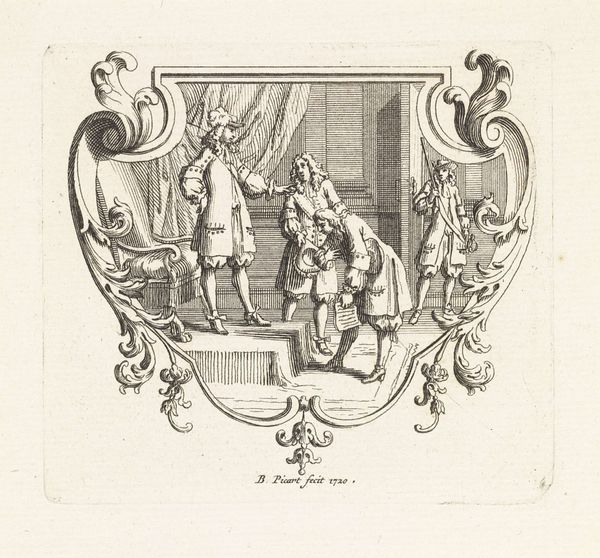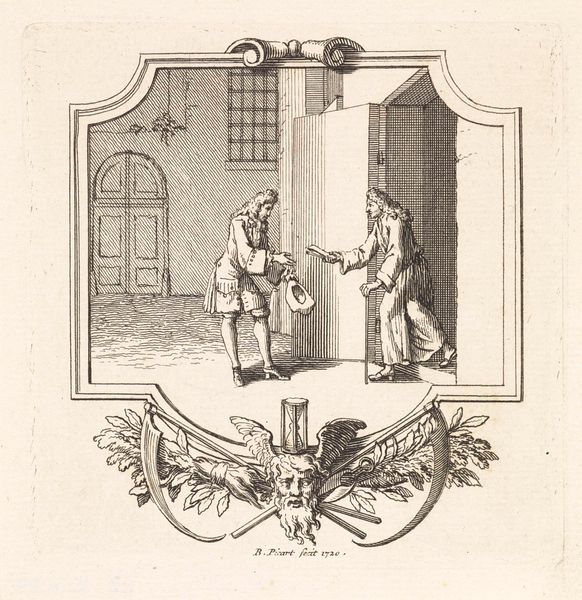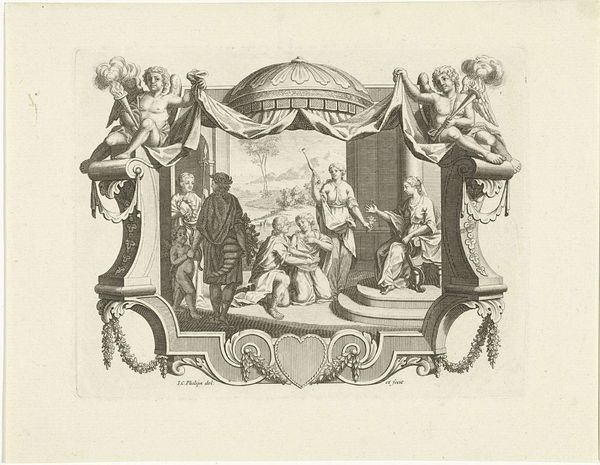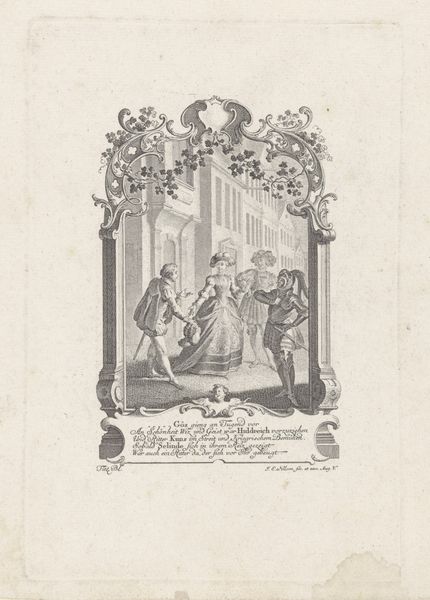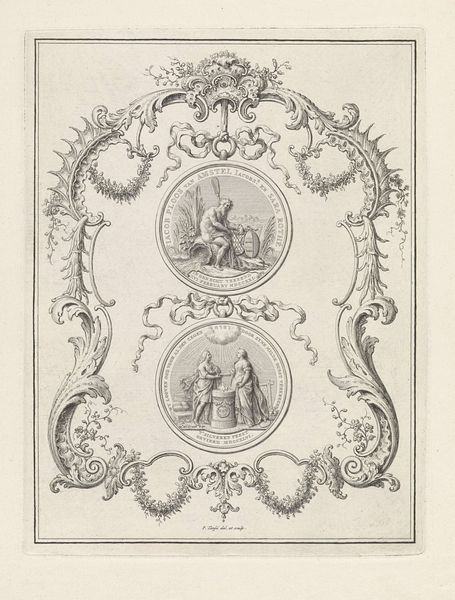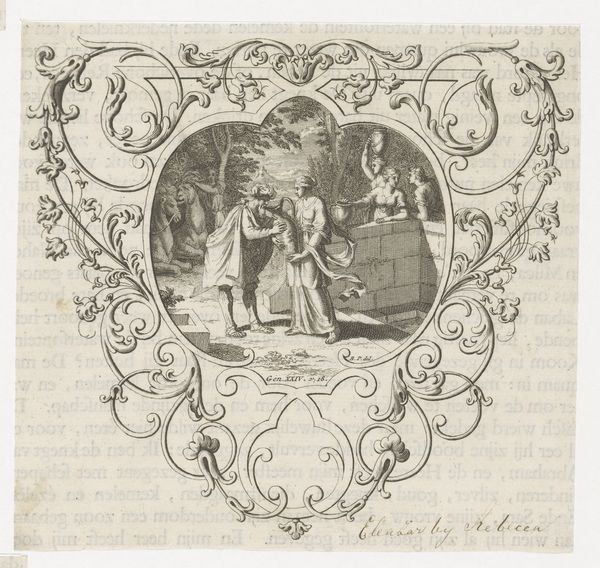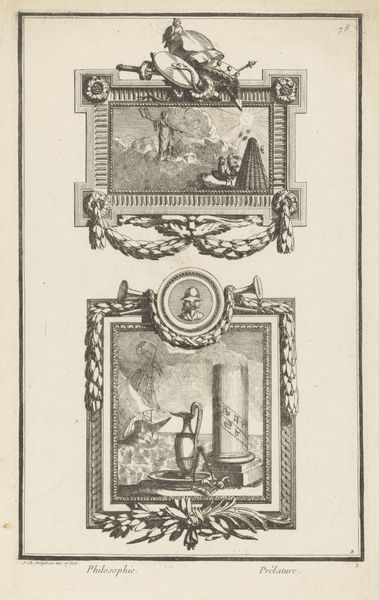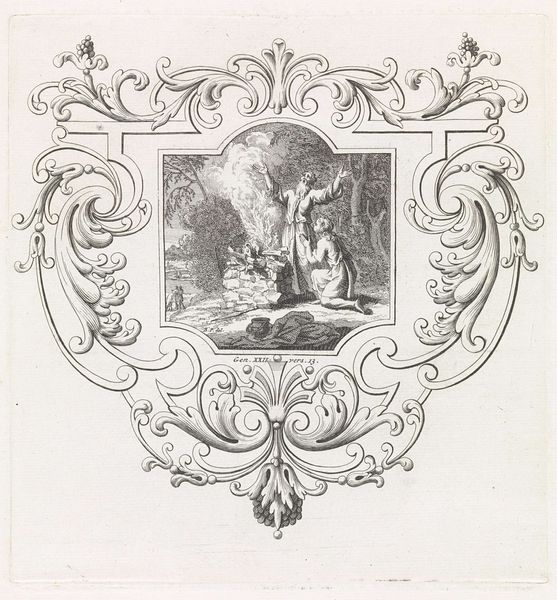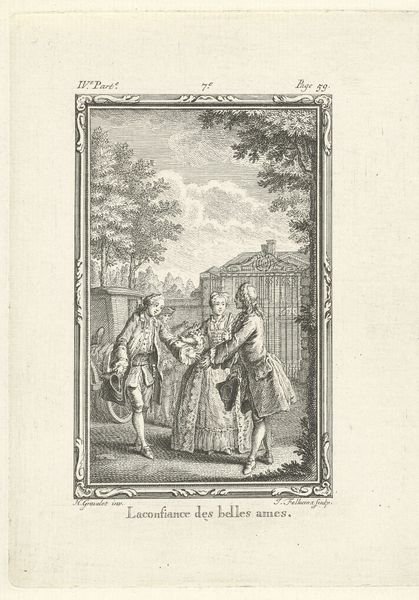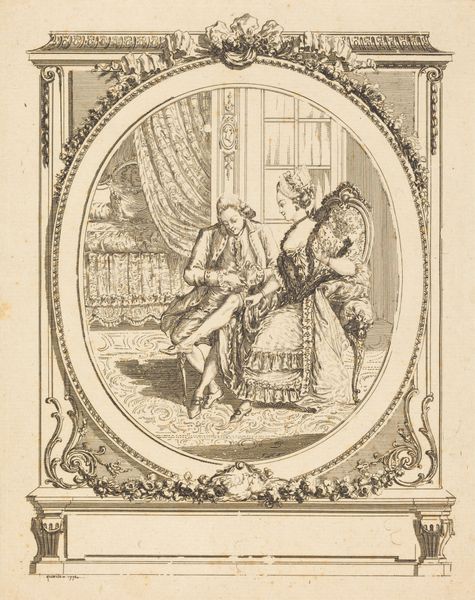
drawing, etching, engraving
#
drawing
#
pen drawing
#
etching
#
figuration
#
classicism
#
line
#
genre-painting
#
history-painting
#
academic-art
#
engraving
Dimensions: height 95 mm, width 77 mm
Copyright: Rijks Museum: Open Domain
Curator: Let's examine this etching from 1721 entitled "Twee mannen bij een afgewaaide pruik en hoed," or "Two Men by a Blown-off Wig and Hat," created by Bernard Picart. Editor: My immediate reaction is intrigue mixed with amusement. The level of detail within such a confined space is remarkable. It looks like a comical interaction is captured, like something out of a play, a fleeting moment of awkwardness frozen in time. Curator: Indeed, Picart was a master of capturing social nuances. His work, reflective of academic art traditions, was often infused with commentaries on the social order. Consider how genre and history painting were intertwined in his work. How the elite lived and viewed themselves and others. Editor: The composition highlights the ridiculousness of high society at the time, right? Two men, presumably wealthy based on their attire, seemingly baffled by mundane misfortune – a misplaced wig and hat! It really touches upon themes of vanity and status doesn't it? How much of our identities are propped up by such fragile markers? Curator: Precisely. The artwork offers a lens through which we can examine 18th-century Dutch society and its emphasis on appearances. Furthermore, Picart's technique – a confluence of etching and engraving – exemplifies classicism while hinting at an emerging linear style. Editor: Looking closer, there is this ornate frame he composed around them...it amplifies the scene's inherent theatricality, doesn't it? The framing itself, with the wig heads adorning each side. I'm immediately questioning the gendered associations too: were wigs seen as specifically masculine markers? Or did their loss hold symbolic weight regarding diminishing power? Curator: Certainly, analyzing such gendered power dynamics through philosophical or even feminist theory allows for richer understandings of pieces such as these, while contextualizing it within shifting social identities. Editor: I never imagined such a seemingly simple image could prompt such multifaceted discussions! It speaks volumes about art's power to hold a mirror to society, inviting continuous reflection across different epochs. Curator: Indeed; each element serves as a cultural marker prompting reflections about socio-political norms and expectations in 1721 and beyond. It serves as an insight into human nature which really translates through the years.
Comments
No comments
Be the first to comment and join the conversation on the ultimate creative platform.
